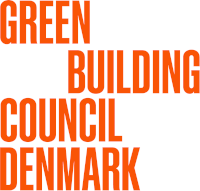Study sketch: Testing the marketability of the proposed EU taxonomy screening criteria for substantial contributions to the circular economy
Real estate is crucial for the successful transition to a resource-efficient circular economy, as it represents a large amount of global material consumption and is responsible for extensive waste streams. It is against this background that buildings take centre stage in EU resource efficiency policy-frameworks and initiatives, including the EU Green Deal, the Renovation Wave and the EU Circular Economy Action Plan. To reduce the risks of resource dependencies and to make a tangible contribution to a circular European economy, buildings-related resource consumption and waste streams need to decrease. However, this can only be achieved by consistently integrating related externalities and impact (“risks”) into financial decision-making.
To accelerate this integration and to mobilise finance for sustainable growth, the EU adopted a “Sustainable Finance Action Plan” in 2018. One recommendation within the plan was to establish a clear and detailed EU classification system (a so-called “taxonomy”) with science-based technical screening criteria for sustainable economic activities for six environmental objectives. With taxonomies now operational for climate change mitigation and adaptation, in March 2022, the Sustainable Finance Platform proposed taxonomy screening criteria for new construction and renovated buildings that contribute to a circular economy.
The study’s approach
In order to transition the proposed technical screening criteria into a functioning system at the very core of a future-proof European economy, the study consortium – the Spanish (GBCe), the Danish (DK-GBC), the Croatian (CGBC) and the Bulgarian Green Building Council (BGBC) as well as the Swiss (SGNI) and Austrian Sustainable Building Council (ÖGNI), the German Sustainable Building Council (DGNB) and CPEA – propose to carry out a study with the goal of evaluating the marketability of the proposed “EU Taxonomy Screening Criteria for Circular Economy” for construction and real estate activities.
The envisaged study will build on the methodology developed for a first market readiness study for the proposed taxonomy criteria for climate change mitigation (see here) which as was conducted by CPEA members and a pan-European sectoral stakeholder group in 2020 and 2021. As its predecessor, the new circular economy criteria-focused study will be based on case studies and is designed to help participants assess the level of effort needed for achieving taxonomy-alignment and associated reporting. By providing invaluable insights regarding data availability, quality and verification and a thorough mapping of documents to adequately and efficiently prove alignment with the proposed screening criteria the study will help identify benefits of implementation of related processes within participating organisations.
The objectives of the study
The main deliverable of the project is a report, written by the GBCs. The study report will have a general section and individual sections per participant. The individual sections will include the results of “Taxonomy Criteria Checks” of their respective selected buildings.
A section in the final report will focus on recommendations addressed to the European Commission / Sustainable Finance Platform. This will include feedback from real case studies to the Commission to better assess market readiness that will help all stakeholders, regulators and private entities to avoid time-consuming and ineffective trials and corrections. All content will be based on the Sustainable Finance Platform’s report from March 2022.
The study structure at a glance
- Initiation of a multi-stakeholder study with participants and the partnering GBCs and CPEA (study consortium); first meeting with the participants
- Individual interviews with study participants carried out by the study consortium.
- Topics: internal evaluation procedures, proposal of sample buildings and portfolios, analysis typification, data structure
- Intermediate meeting with the study group
- Knowledge sharing on taxonomy requirements for Circular Economy
- Provision of a simple Excel spreadsheet based “Taxonomy Criteria Check” tool, including documentation templates for buildings, provided by the study consortium
- Sampling data / documentation for selected case studies by the partners / participants
- Verification of provided information of the documentation per building by the study consortium
- Summarising results of discussions and tests by the study consortium and provision of a draft general report; complementation of the draft report by financial institution participants
- Provision of a final general report and individual results of case studies
- Final meeting (online) to discuss results; development of communication materials; targeted communication of results
- Communication of results and findings to the European Commission
Contact
- GBCe: Julia Manzano, manzano@gbce.es , Dolores Huerta dolores.huerta@gbce.es, Bruno Sauer, bruno.sauer@gbce.es
- DGNB: Seema Issar, s.issar@dgnb.de & Dr. Christine Lemaitre, c.lemaitre@dgnb.de
- DK-GBC: Mette Qvist, qvist@dk-gbc.dk
- CGBC: Dean Smolar, smolar@gbccroatia.org
- ÖGNI: Sabine Huger, huger@ogni.at
- CPEA: Ursula Hartenberger, hartenberger@cpea.eu
- SGNI: Heinz Bernegger, bgge@zhaw.ch








